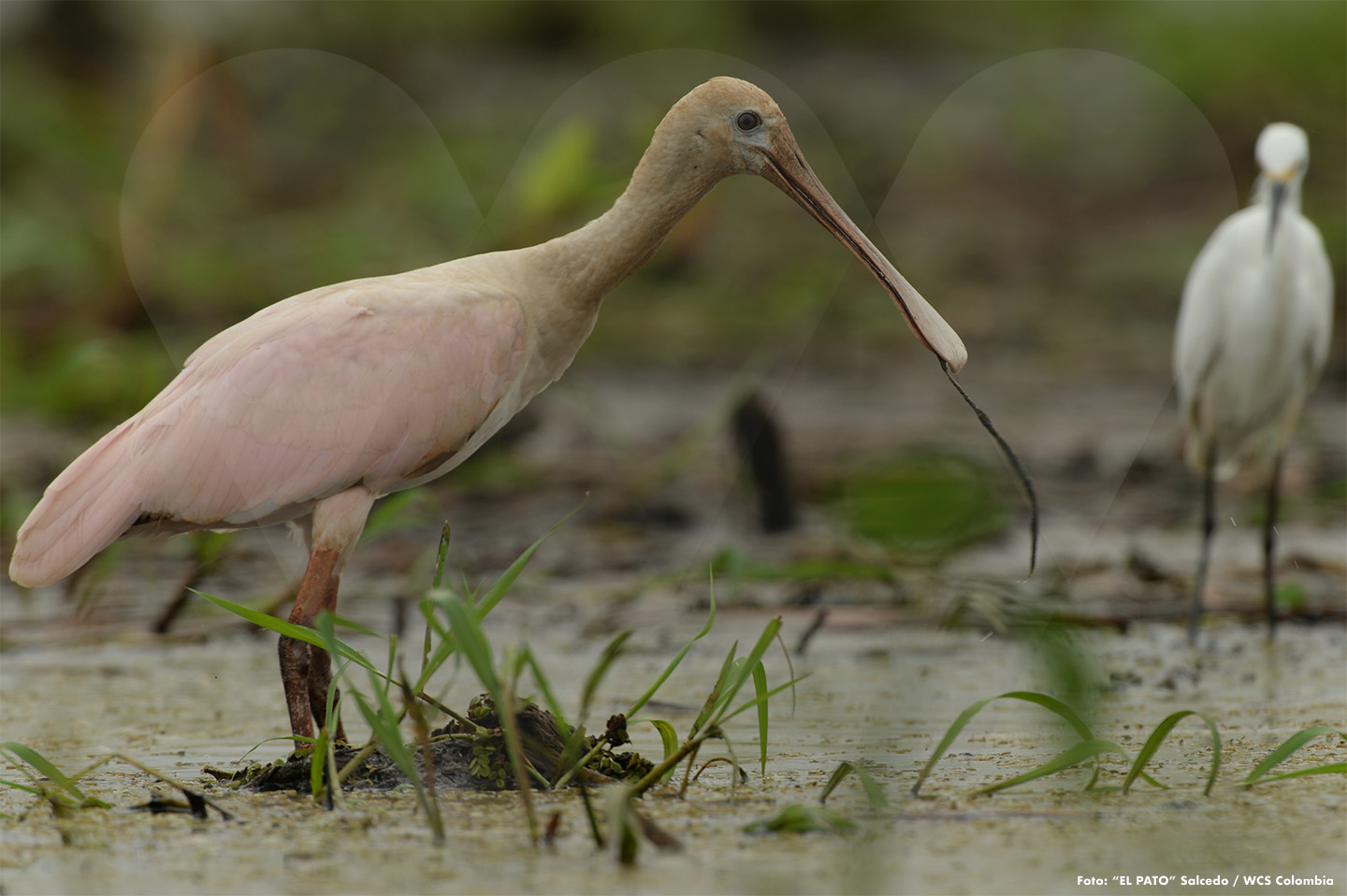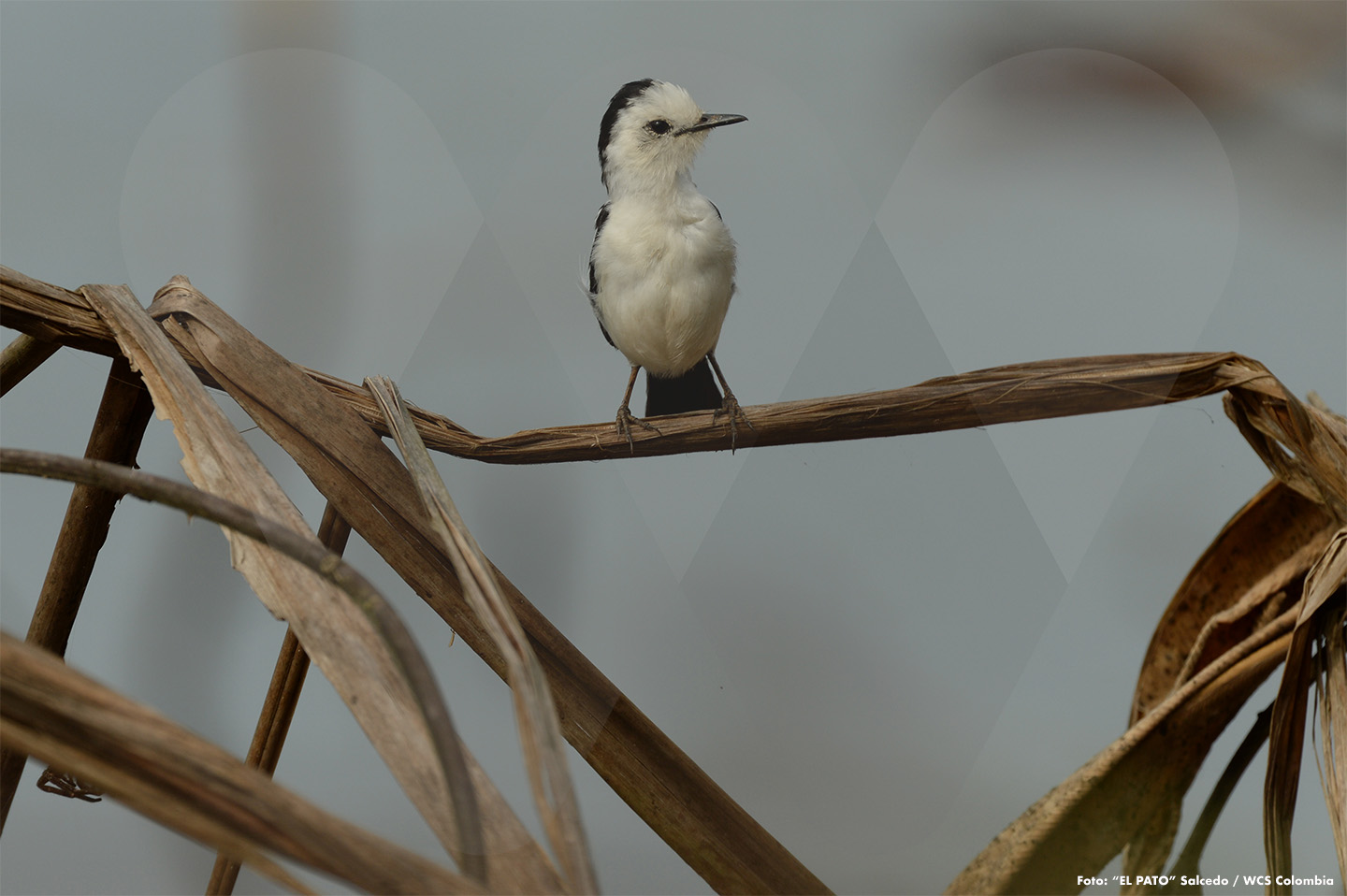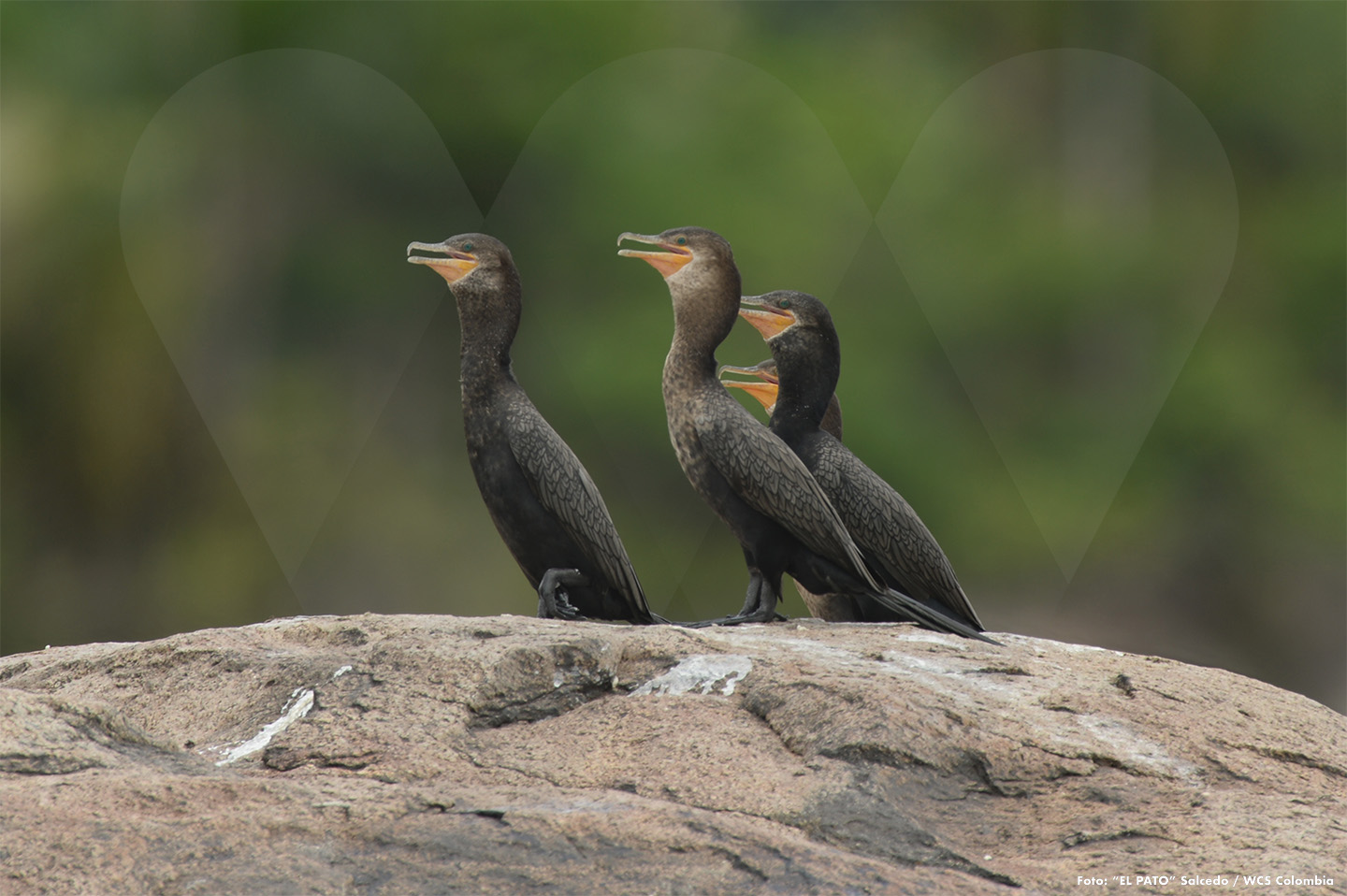 Platalea ajaja
Platalea ajaja
This image was taken in Ciénaga de Bañó. Its waters border Cotocá Arriba, beautiful township located on the banks of the Río Sinú, in the Department of Córdoba. This bird, a relative of the heron, has a large geographic range, going from the south of United States to Argentina. It is commonly called roseate spoonbill.
 Fluvicola pica
Fluvicola pica
Panamá, the north of South America and the Island of Trinidad, are the lands where the pied water-tyrant lives. This bird lives comfortably in flooded savannas, wetlands and the fringes of mangrove forests. Insects are its favorite diet. We found the one we see here while it lingered in a small body of water near the Bahía de Cispatá.
 Penelope perspicax
Penelope perspicax
This species is endemic to Colombia, which means that it only lives in our country. Also known as the Cauca guan, it usually flies between 700 and 1800 meters above sea level, in Andean forests in the Departments of Cauca, Valle del Cauca, Risaralda and Quindío. Very important: it is in danger of extinction.
 Anas andium
Anas andium
It is also called Andean teal. It lives in the high zones of the Andes in Venezuela, Colombia and Ecuador, with an upper elevation limit of 4300 meters above sea level. There, it lives in wetlands and rivers. We found the one in this photograph in the Laguna de Otún, in Los Nevados National Natural Park, Central Andes Range.
 Phalacrocorax brasilianus
Phalacrocorax brasilianus
Let’s mention some of its vernacular names: neotropic cormorant, olivaceous cormorant, bigua cormorant. Its home is generally associated with water, in coastal zones as well as in interior wetlands and rivers. Its distribution is very broad, United States, Central America, South America and some Caribbean islands. We photographed this small group while it rested on a rock in the middle of the Orinoco River.
 Diglossa glauca
Diglossa glauca
The Andean forests of Colombia, Ecuador, Perú and Bolivia are the home of the deep-blue flowerpiercer or golden-eyed flowerpiercer. This species has a very particular characteristic: of all the hummingbirds, they are the only ones with yellow eyes. We were able to capture this image in a very well conserved zone in the high – very high – part of the Putumayo piedmont.